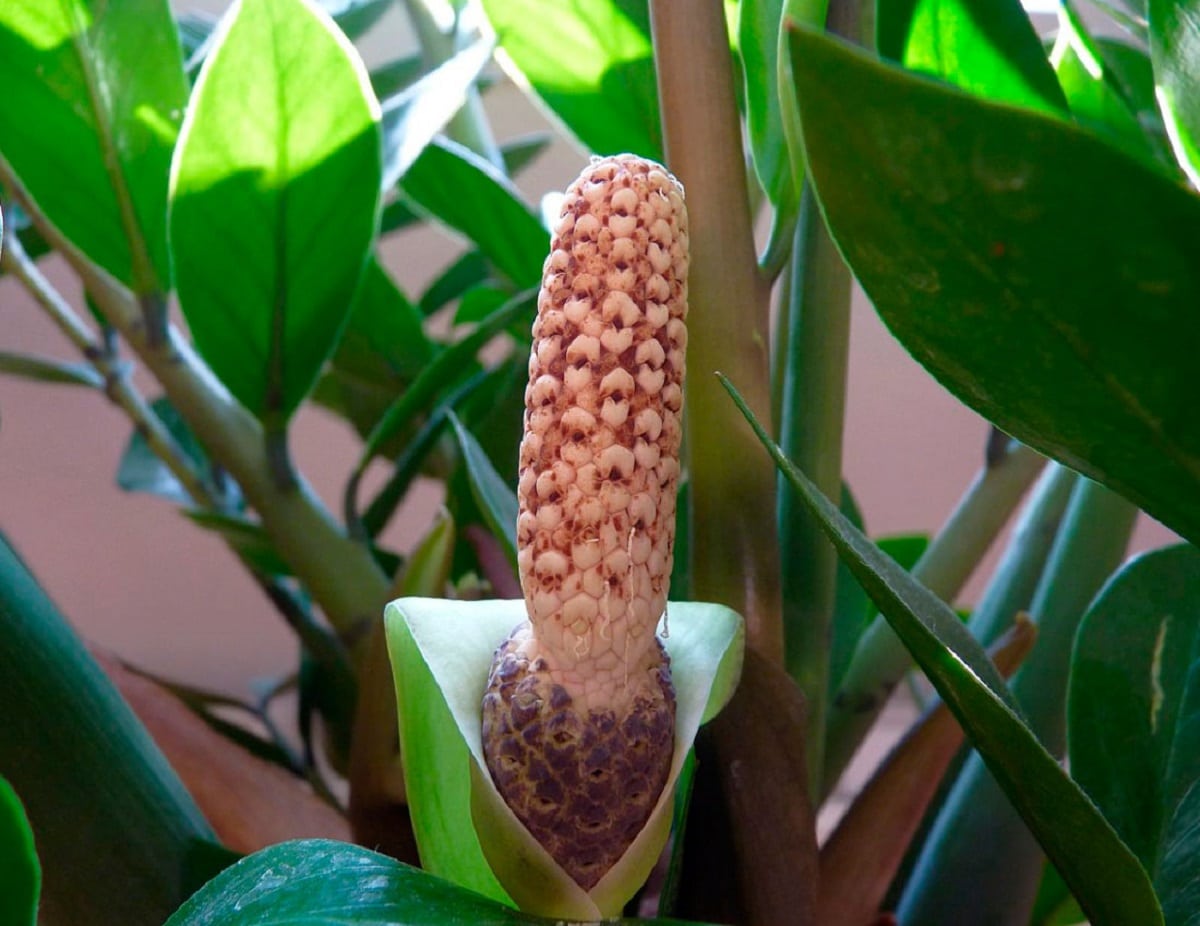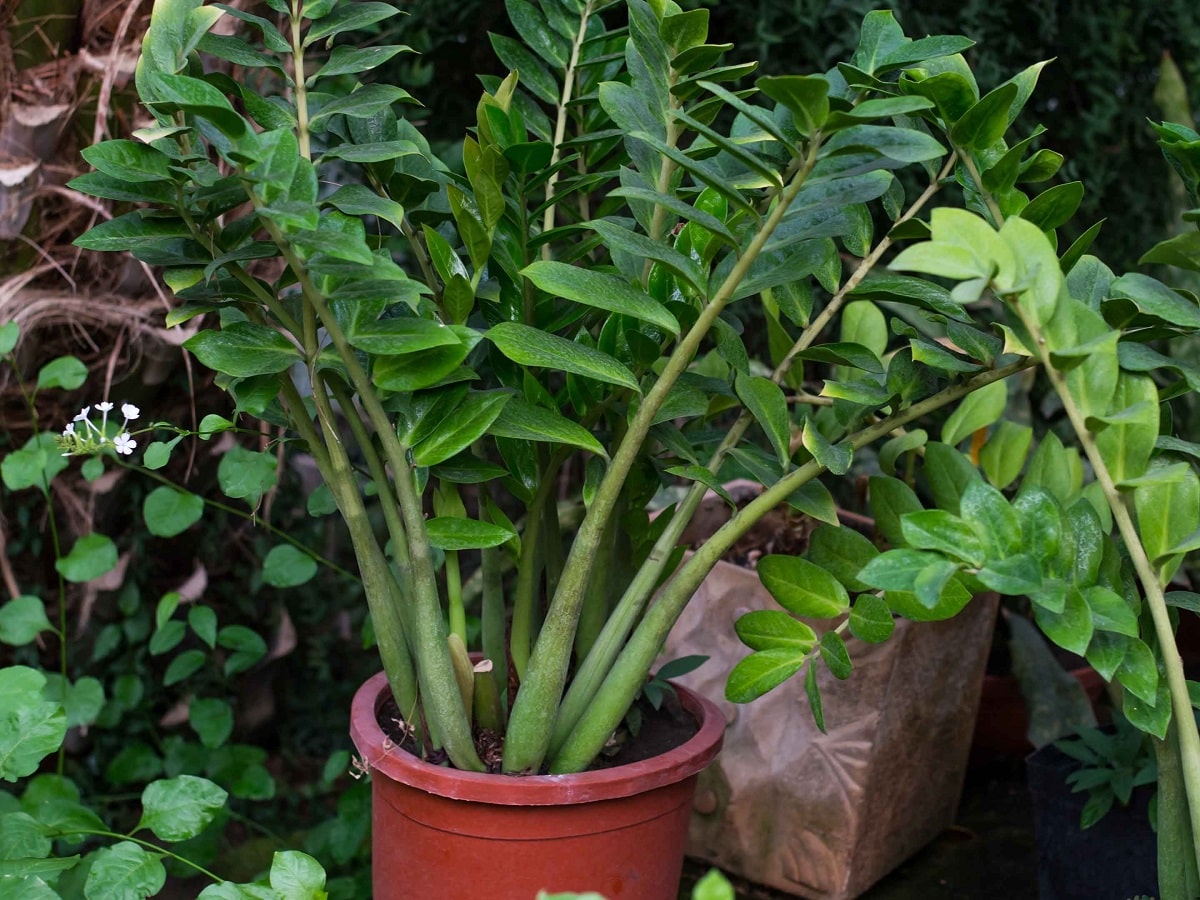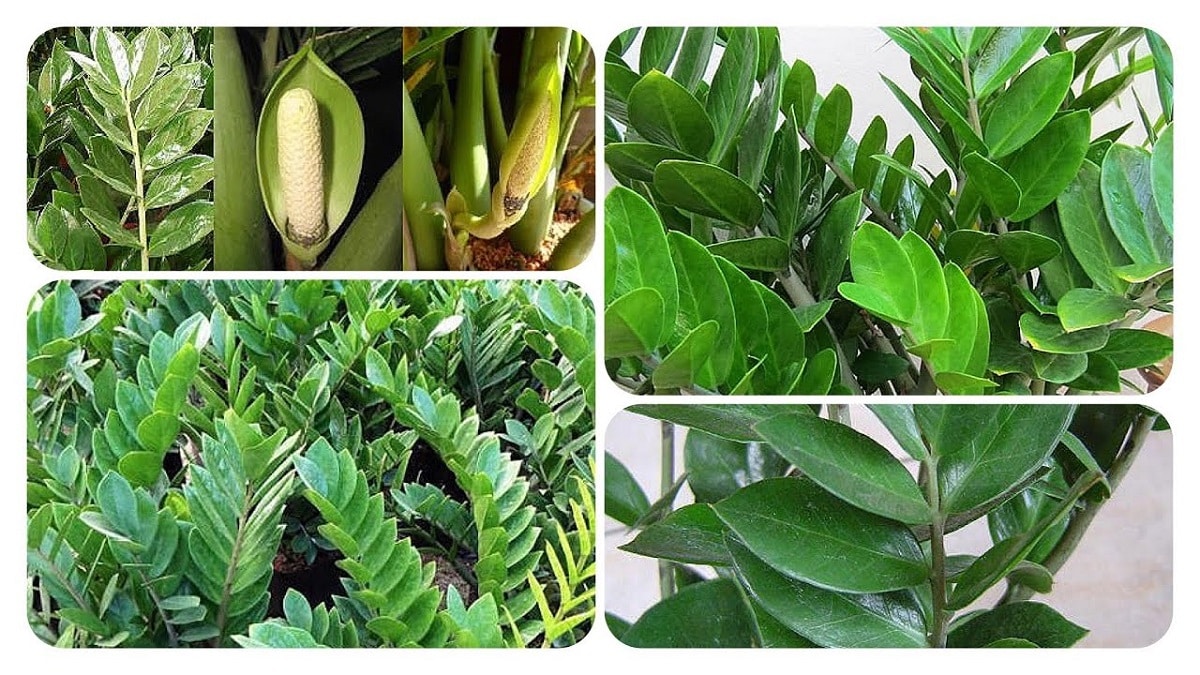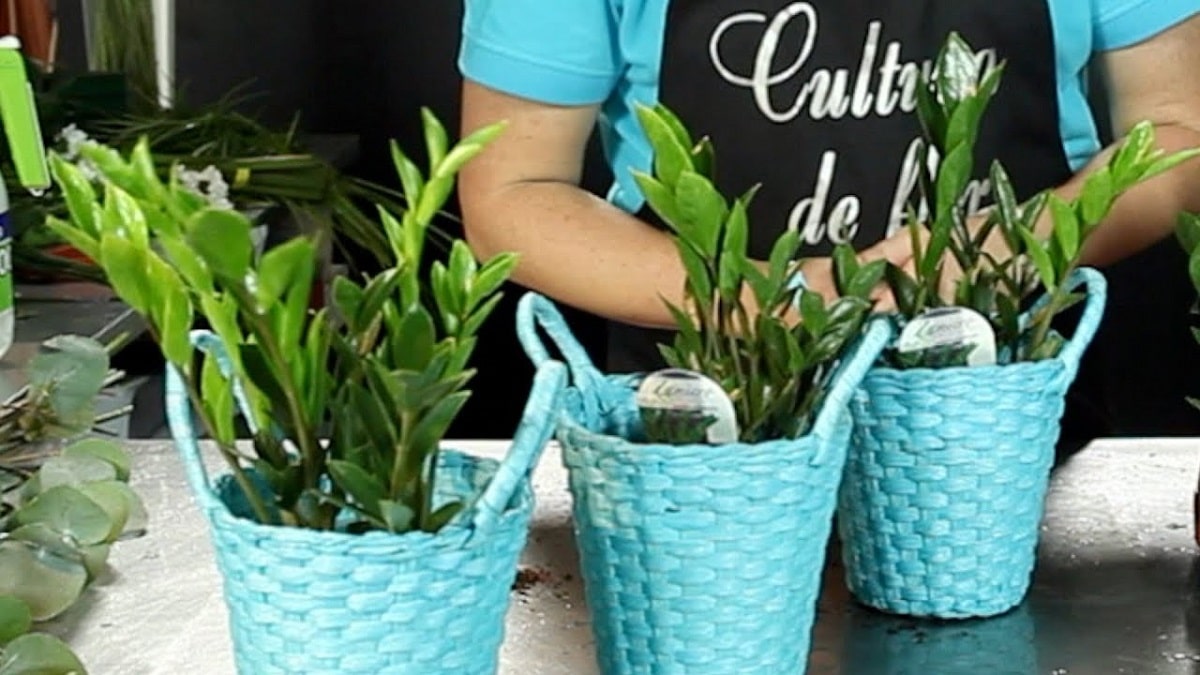
When it comes to easy-care houseplants, there's one tropical plant we can't ignore: the zamioculca (Zamioculcas zamiifolia), also known in some countries as the lucky plant. It is a very showy species with very showy leaves and stems, valued for its ability to decorate interiors and for its remarkable resistance. Many people wonder about the flowering of zamioculca and how to make it flourish.
For this reason, we are going to dedicate this article to tell you what are the best tips and tricks for the flowering of zamioculca, its characteristics and the care necessary for it.
Key features

Scientifically known as Zamioculcas zamiifolia, this tropical plant native to Africa is perfect for beginners or hobby gardeners who have little time for plant care. Let's start talking about its features:
- The peculiar appearance of the zamioculca plant it is due to its ability to trap water in its fleshy leaves and stems, which serve as a reserve in case of drought, turning it into a succulent.
- It is a perennial plant that can reach a height of 1 meter in its native habitat, but in pots and indoors it tends to fall slightly below this.
- Zamioculca flowers have little ornamental value because they consist of small inconspicuous yellow inflorescences, which is why it is a species appreciated mainly as a green plant.
- Its leaves are poisonous, so keep children or pets away from ingesting it.
Location and irrigation of the Zamioculca
This plant likes a sunny place, although it does not need light like other indoor plants. If you have a well-lit room, you can place your zamioculca out of direct sunlight and you will give it a good supply of light, which will prevent its stems from drying out or rotting.
As for the temperature, being an indoor plant, naturally, it is not exposed to extreme conditions. In any case, zamioculca grows well at temperatures above 15ºC, so try not to store it in a room where the temperature drops below that temperature.
If it is placed outdoors, all this must be taken into account, place it in a place with a suitable temperature, in a semi-shade place, that is, close to the sun but not directly.
It is very important not to water this plant too much., since, like most water-retaining plants, excessive watering can easily lead to root rot. Therefore, try to avoid flooding when watering the plants and be sure to pot them with drainage holes. Allow the soil to dry out between waterings, especially if your plant is not in a bright spot. During the colder months it will be necessary to further reduce the frequency of watering.
Substrates and fertilizers for the flowering of Zamioculca

Since it is a plant that does not tolerate too much humidity, it is important that its substrate provides the best possible drainage. Prepare a layer of expanded clay, coarse gravel, or other similar material in the bottom of the container, then use a light, well-draining, all-purpose growing medium.
Regarding the subscribers, the plants receive a monthly donation during the warmer months, which can be dissolved in the irrigation water. Conveniently, it is a high quality fertilizer rich in micro and macro elements.
This plant has very strong and well-developed roots that, if grown correctly, will quickly take up all the available space in the pot. Therefore, it should be transplanted into a new, larger container about every 2 years.
The strong roots of the plant can deform pots or containers, forcing us to break them carefully in order to extract and transplant it. If you see this, transplant it next spring.
Yellowish leaves
Zamioculca leaves turn yellow for various reasons:
- The first and most common is that you are watering excessively.. If this is the case and the trend continues, the leaves will turn black and black, a sign that the plant is rotting. Trim all affected leaves with sanitized tools and isolate the hazard.
- It could also be that your plant needs to be transplanted or fertilized because it has depleted the nutrients in the soil.
- This could be due to the attack of the mealybug, a plague that sometimes affects this plant. Look for pests on the undersides of the leaves, then apply neem oil or potassium soap.
- It could also be too much direct sunlight and the leaves are burning.. In this case, you will see that they start to turn yellow, but quickly turn more brown, dry out and fall off.
Flowering of the Zamioculca

Its flowering does not have an ornamental meaning and rarely appears if it is as an indoor plant. At other times it is a bloom that goes unnoticed. Therefore, following the care mentioned above, they will probably flourish well.
They are unisex flowers with spathes very similar to anthuriums or crane lilies. Bright yellow, partially hidden between XNUMX and XNUMX centimeters between the bases of the leaves. This flowering usually occurs between May and October, depending on the weather and age of the plant.
One of the successes of the good behavior of the Zamioculca in the home is that once its location is chosen it does not change it. Over time, the plant acclimates and begins to shed leaves slowly but steadily developing into longer, broader leaflets.
Despite what you think, this plant is not desert. Sometimes it is found in very dry habitats, but it must also be taken into account that in its natural habitat this plant grows in humid tropical forests, savannahs and stony soils. To cope with periods of drought, it stores water in the thick petioles.
Because the plant can go without water for long periods of time, it is often said to be a hardy plant. Yes, it will survive, but that doesn't mean it will thrive. Although it is usually informative, this plant needs water like any other and if we do not water it properly, its leaves begin to fall, a survival technique that this species has developed in its natural habitat. to conserve water and survive periods of severe drought. That is, it behaves like a deciduous plant while it waits for the rainy season to return.
Defoliation does not mean that the plant dies, far from it, it simply remains inactive to protect itself from water stress. In fact, if we come across something like that, as long as we return it frequently, it will slowly revive. But I think we can all agree that it's not very tempting to have a leafless plant at home.
I hope that with this information you can learn more about the flowering of the Zamioculca.